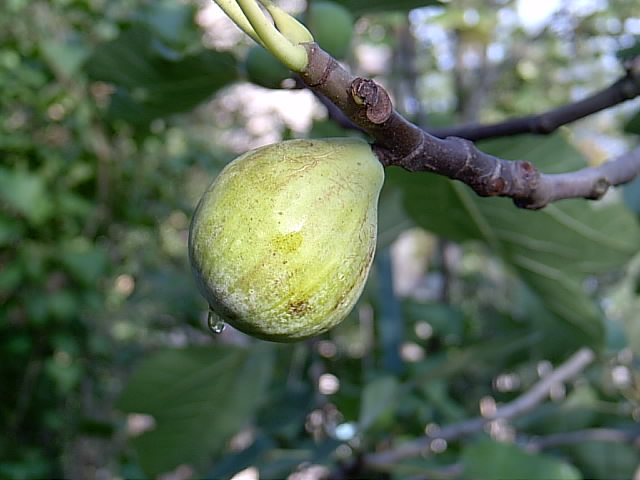︎︎︎ FICO DOTTATO

Questa varietà è ancora abbastanza diffusa in tutto il centro sud Italia. Viene anche detta ‘dalla goccia’ per la tendenza a produrre melassa. L’albero è mediamente vigoroso, irregolare espanso. Molto rustico, viene per lo più riprodotto da pollone. Ha foglie per lo più trilobate, con lobi non molto approfonditi, ma anche intere. È una varietà quasi bifera. I fioroni di Luglio sono molto pochi, hanno pezzatura media, di colore verde chiaro, di sapore poco aromatico, ma molto dolci, mielato. I forniti, che sono la produzione migliore, hanno la stessa forma ovoidale dei fioroni, di media grandezza e maturano a partire da metà settembre; la buccia è di un verde più scuro, un po’ più dura e costoluta. La polpa è rosso chiaro, aromatica e dolcissima, con numerosi piccoli acheni. I fioroni vengono raccolti dalla seconda metà di luglio fino alla fine del mese. I forniti dalla metà di settembre fino ai primi di ottobre.
This variety is still quite widespread in all of Central and Southern Italy. It is also called fig of the drop because of its tendency to produce molasses. The tree is moderately vigorous with irregular and spreading habit. It is very hardy and mostly reproduced through shoots. Its leaves are mostly three-lobed with no to slight lobation. The fruit It is almost a biennial variety. The fruits of the breba crop in July are rather few, of medium size, of light green colour, and not aromatic but quite sweet, with a honey-like taste. The fruits of main crop, which are the better of the two productions, have the same oval shape of the breba crop. They are medium sized and ripen mid-September and beyond, with a darker green colour skin, a bit thicker and ribbed. The flesh is a light red, aromatic and very sweet, with plentiful small achenes. Harvest and ripening The figs of the breba crop are harvested during the last two weeks of July. The main crop is harvested between mid-September and early October.